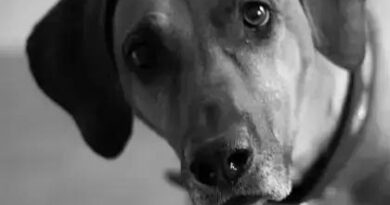What is: X-ray procedures and safety
What is X-ray Procedures?
X-ray procedures are diagnostic imaging techniques that utilize ionizing radiation to create images of the internal structures of the body. In veterinary medicine, X-rays are commonly used to examine bones, organs, and tissues in dogs. This non-invasive procedure allows veterinarians to diagnose various conditions, such as fractures, tumors, and infections, providing crucial information for treatment planning. The process involves positioning the dog in a specific way to capture the necessary images, ensuring minimal discomfort and maximum clarity.
How Do X-ray Procedures Work?
The X-ray machine emits a controlled amount of radiation that passes through the dog’s body and is absorbed by different tissues at varying rates. Dense tissues, like bones, absorb more radiation and appear white on the X-ray film, while softer tissues, such as muscles and organs, appear in shades of gray. The resulting images are then analyzed by veterinarians to identify any abnormalities or health issues. The entire process typically takes only a few minutes, making it a quick and efficient diagnostic tool.
Safety Measures During X-ray Procedures
Ensuring the safety of both the dog and the veterinary staff during X-ray procedures is paramount. Protective measures include the use of lead aprons and shields for personnel, as well as minimizing the dog’s exposure to radiation. In many cases, the dog may be sedated to keep it calm and still during the imaging process, which further reduces the risk of movement artifacts that could compromise image quality. Additionally, modern X-ray machines are designed to limit radiation exposure, making the procedure safer than ever.
Preparing Your Dog for an X-ray
Preparation for an X-ray procedure may vary depending on the specific needs of the dog. Typically, veterinarians will advise fasting the dog for several hours prior to the procedure to ensure a clear view of the abdominal area. It’s also essential to inform the veterinarian about any medications the dog is currently taking or any previous health issues. This information helps the veterinary team tailor the procedure to the dog’s unique situation, ensuring optimal results.
What to Expect During the X-ray Procedure
During the X-ray procedure, the dog will be positioned on a padded table, and the veterinary technician will ensure that it is comfortable and secure. The technician may use straps or blankets to prevent movement. Once the dog is in place, the technician will step out of the room to operate the X-ray machine from a safe distance. The actual exposure to radiation lasts only a fraction of a second, and the entire process is typically completed quickly, allowing for minimal stress on the animal.
Post-X-ray Care for Your Dog
After the X-ray procedure, most dogs can resume their normal activities immediately. However, if sedation was used, the veterinarian will provide specific post-operative care instructions, including monitoring the dog until the effects of the sedation wear off. It’s essential to observe the dog for any unusual behavior or signs of discomfort and to follow up with the veterinarian if any concerns arise. The X-ray images will be reviewed, and the veterinarian will discuss the findings and any necessary treatment options.
Understanding the Risks of X-ray Procedures
While X-ray procedures are generally safe, there are some risks associated with exposure to ionizing radiation. However, the benefits of obtaining critical diagnostic information often outweigh these risks. Veterinarians take great care to minimize exposure by using the lowest possible radiation dose necessary to obtain clear images. It’s important for pet owners to discuss any concerns with their veterinarian, who can provide reassurance and information about the safety protocols in place.
Alternatives to X-ray Procedures
In some cases, alternative imaging techniques may be considered instead of X-rays. These can include ultrasound, MRI, or CT scans, each offering different advantages depending on the specific condition being evaluated. Ultrasound, for example, uses sound waves to create images and is particularly useful for examining soft tissues and organs. Discussing these options with a veterinarian can help pet owners make informed decisions about their dog’s diagnostic care.
Cost of X-ray Procedures for Dogs
The cost of X-ray procedures can vary widely based on factors such as the location of the veterinary clinic, the complexity of the X-ray needed, and whether sedation is required. On average, pet owners can expect to pay anywhere from $75 to $300 for X-ray services. It’s advisable to consult with the veterinary clinic beforehand to understand the pricing structure and any additional costs that may arise from follow-up consultations or treatments based on the X-ray findings.
Conclusion on X-ray Procedures and Safety
Understanding X-ray procedures and their safety is crucial for pet owners. These diagnostic tools play a vital role in veterinary medicine, helping to ensure the health and well-being of dogs. By being informed about the process, preparation, and care involved, pet owners can feel more confident in their decisions regarding their dog’s health care.




